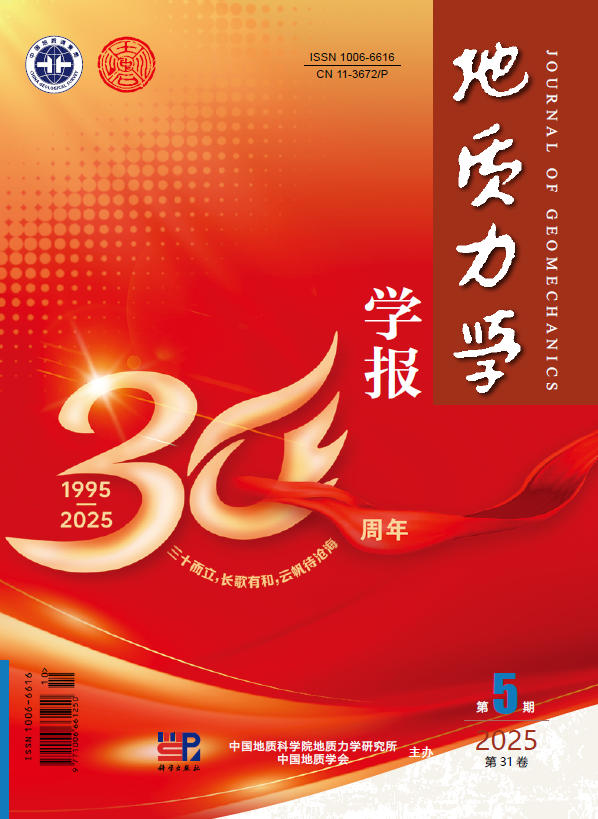Abstract:
[Objective] Regarding the tectonic evolution of the Paleo-Asian Ocean in the northern part of the Beishan orogenic belt, it is generally believed that the Carboniferous-Permian is in the stage of ocean-continent evolution. However, there is much controversy among scholars about the closure time of the Paleo-Asian Ocean. The Heiyingshan area is located in the northern margin of the Beishan orogenic belt and is a key area for studying the evolution of the Paleo-Asian Ocean in the Beishan orogenic belt. The geochemical characteristics of tuff in this area are analyzed in order to reveal its tectonic evolution background and further constrain the evolution process of the Paleo-Asian Ocean in the northern Beishan orogenic belt. [Methods] The Late Carboniferous and Late Triassic volcanic tuffs exposed in Heiyingshan area were analyzed by means of petrological and geochemical methods. Through the determination of major, trace and rare earth elements, the geochemical characteristics of the volcanic tuffs were obtained. Combined with the published regional volcanic rock age and geochemical data, the petrogenesis and tectonic setting of volcanic tuff are discussed. [Results] The results show that the Late Carboniferous volcanic tuff belongs to the peraluminous calc-alkaline series, which is enriched in large ion lithophile elements (LILE) Rb, Ba, Th and U, and depleted in high field strength elements Nb, Ta, Zr, Hf and Ti. The total rare earth element ΣREE is 74.64×10-6~142.45×10-6, and the light and heavy rare earth fractionation is obvious (LREE/HREE=5.14~7.49, (La/Yb)N=4.58~6.36). The chondrite-normalized rare earth distribution pattern is right-leaning, with weak negative Eu anomaly (δEu=0.35~0.66). It shows the characteristics of I-type granite. The Late Triassic volcanic tuff belongs to the peraluminous high-K calc-alkaline series, rich in silicon and alkali, poor in aluminum and magnesium, with strong negative Eu anomaly (δEu=0.02~0.22). The chondrite-normalized rare earth distribution pattern is slightly right-leaning ‘seagull type’, enriched in large ion lithophile elements such as Rb, Th and U, depleted in incompatible elements such as Ba, Nb, Zr and Ti, depleted in high field strength elements Hf and Zr, and has the characteristics of S-type granite. The Th content of the Late Carboniferous and Late Triassic rock samples in the Heiyingshan area is 7.66~32.2μg/g, with an average of 19.24μg/g, which is much higher than the average mantle abundance and closer to the crust. The Nb/Ta values of the rock samples are 8.01~12.78, with an average value of 10.36, which is much lower than the average value of 60 in the mantle and closer to the average value of 11 in the crust. In addition, the Ba/La ratios of the Late Carboniferous volcanic rocks range from 19.19 to 24.09, with an average of 21.64, slightly higher than the continental crust average of 15.63. [Conclusion] The results show that the Late Carboniferous and Late Triassic volcanic tuffs in the Heiyingshan area were formed in the subduction and collision background of the Paleo-Asian Ocean, respectively, indicating that the tectonic environment changed from the Late Carboniferous to the Late Triassic in the Hongshishan-Heiyingshan area. The volcanic magma in this area is mainly derived from partial melting of the crust, and the Late Carboniferous volcanic rocks may be mixed with a small amount of mantle-derived materials. [Significance] The geochemical characteristics of the Late Carboniferous and Late Triassic volcanic tuffs in the Heiyingshan area provide petrological evidence for the subduction-collision process of the Paleo-Asian Ocean in the Beishan orogenic belt. The results limit the time limit of the tectonic environment transformation in the Hongshishan-Heiyingshan area in the northern Beishan, which is of great significance for understanding the final closure process of the Paleo-Asian Ocean.



